 Sunday/Weekend
Sunday/Weekend

" />HCM City is losing an increasing number of heritage buildings to urbanisation, poor urban planning and a lack of awareness about the importance of retaining its architectural and historic identity. Bồ Xuân Hiệp reports.
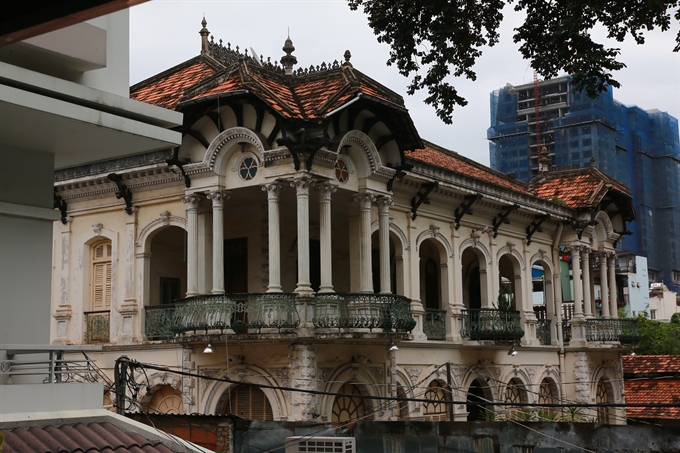 |
| Perilous future: One of the historic buildings in HCM City’s District 3. The city has about 3,000 valuable old houses and villas that could face demolition if they are not renovated. VNS Photo Duy Minh |
HCM City is losing an increasing number of heritage buildings to urbanisation, poor urban planning and a lack of awareness about the importance of retaining its architectural and historic identity. Bồ Xuân Hiệp reports.
Few people are aware that within rapidly developing HCM City stands a house more than 200 years old in District 3 near one of the city’s tourist meccas, the War Remnants Museum.
Hidden away on the grounds of the HCM City Catholic Archbishop’s Residence on 180 Nguyễn Đình Chiểu Street, the house is the oldest remaining residential structure from the Nguyễn Dynasty (1802-1945).
The house, having undergone several renovations throughout the years, is among a handful of old houses and villas that have been professionally preserved.
Its appearance and design has been maintained, even after it was moved twice prior to its current location, according to priest Trần An Hiệp of the Catholic Archdiocese.
The house was built in 1790 under the order of Lord Nguyễn Ánh, who later became the first Nguyễn Dynasty emperor Gia Long in 1802.
Ánh initially asked for a bamboo house with a thatched roof for French Catholic priest Pigneau de Behaine to tutor prince Nguyễn Phúc Cảnh.
In 1799, the emperor had the house improved with wooden walls (made without nails) and a brick roof. When de Behaine died in October of that year, the house was used to host priests coming to work in the city.
In 1864, the house had to be moved to an area close to what is now the Reunification Place because the new Sài Gòn Zoo and Botanical Garden was being built on the original site.
When the house was moved to its current location in 1911, construction on the Archbishop’s Residence was completed, according to the Archdiocese website.
Bùi Ngọc Thẩm, manager of the archdiocese, who has lived in the building since he was 10 years old, said the house, which has a floor space of 136 square metres, has recently been restored to its original structure.
“We have replaced beams that were damaged by termites and were at risk of collapsing at any time. We completely followed the original shape and style,” he said.
Floral decorations are carved into the original doors and doorframes, while the walls are solid and the house well-ventilated.
Following common building techniques used during the Nguyễn Dynasty, the house has three compartments and two annexes, with yin and yang roof structures associated with traditional architecture.
Today, the house, which serves as a public place for people to attend Mass every morning, is on the list of the city’s cultural heritage structures.
Having retained its original condition, it is possibly the only place in the city that has been professionally preserved.
However, the fate of thousands of other historic houses in the city remains uncertain. Time, climate change, urbanisation and ineffective management have all contributed to the deterioration.
Complicated procedures
HCM City has about 3,000 valuable old houses and villas that could be preserved properly, but are likely to be demolished, according to the Architecture Research Centre at the city’s Department of Planning and Architecture.
Of that number, nearly 1,300 houses were built before 1975. About 168 of them are under State management and receive funds from the city’s budget for repair and preservation.
However, only eight houses remain in good condition, according to the Urban Research and Development Centre.
Valuable old buildings, mostly built during the French colonial period, include the HCM City People’s Court (built in 1881), King’s Palace or Revolutionary Museum (1885), Majestic Hotel and Notre Dame Cathedral (1887), Sài Gòn Post Office (1886-1891), HCM City’s People’s Committee (1907), Opera House (1900) and Bến Thành Market (1912-1914).
Many colonial villas have been renovated and now house schools, restaurants and coffee shops, most of which are located in District 3 on Tú Xương, Võ Văn Tần, Nguyễn Đình Chiểu, Lê Quý Đôn, Trần Quốc Thảo streets.
But, in recent years, many other old houses and villas have been demolished or have fallen into disrepair.
Under city regulations, if the villas are museums or state-owned houses, they are allowed to be maintained.
However, a large number that are private properties have not been taken care of properly. Some of the villas are so dilapidated they are no longer habitable.
For instance, the 500sq.m old villa on Châu Văn Liêm Street in District 5 has been converted into a parking space.
Ngô Thanh Hiền, the villa’s owner, said her family had tried to renovate the villa, but due to frustrating administrative procedures and sizable costs, they had given up.
“The villa was too dilapidated. Three generations of our family lived there. No more! I decided to sell it,” she said.
Nguyễn Trường Lưu, chairman of the HCM City Association of Architects, said a number of old houses and villas had not been classified or even added to the city’s preservation list.
The authorities do not have management regulations or support policies to help owners preserve their houses. Thus, people often decide to sell or demolish them.
"Because of the complicated procedures, owners are reluctant to ask for permission to renovate the houses," he added.
City regulations require that any changes made to old houses must be approved after assessment by the Department of Planning and Architecture.
All requests for renovation and reconstruction of villas and houses with heritage status must be submitted to the department for evaluation on a case-by-case basis.
However, many residents who continue to live in those old buildings are afraid the houses could collapse while they wait for the city to approve repairs.
Nguyễn Anh Tuấn, deputy director of the Architecture Research Centre, said the villas, often located in prime, expensive locations in the city centre, had been replaced with high-rises.
Districts 1 and 3 once had 500 old villas, but the figure has fallen to just over 200.
Speaking at a seminar on historic site preservation in HCM City recently, Tôn Nữ Thị Ninh, former vice chairwoman of the National Assembly’s Foreign Affairs Committee, said that it was "essential to build a strong legal framework to preserve historic sites in the country".
Loss of cultural identity
Professional historians and preservationists believe the city is destroying its legacy, as well as beauty and potential tourism value, by demolishing so many old structures that could be saved.
Tim Doling, an English historian and writer who has conducted research about Việt Nam for more than 20 years, including on Sài Gòn and Chợ Lớn architecture, said that authorities and citizens must become more aware of the importance of heritage preservation.
“The rate at which historic buildings have been and continue to be destroyed in HCM City in the name of development is truly frightening,” Doling told Việt Nam News via email.
“Many outside observers have asked me if there is perhaps some kind of official policy to destroy the past," he said. "Of course, we know that’s not the case, but it does give you some idea about how the ongoing destruction of heritage here is viewed by foreigners.”
“The sad truth is that there is simply no vision for urban development in the City, which is occurring in a piecemeal and uncoordinated fashion, without any coherent policy for preserving its old buildings," said Doling, who runs a regularly updated website, www.historicvietnam.com, about heritage issues.
In addition, there is still no comprehensive inventory of historic buildings in HCM City, and the official list of national and municipal heritage sites consists of mostly ancient temples and pagodas and revolutionary sites.
Apart from the few important tourist attractions such as the HCM City Post Office, Bến Thành Market and the Reunification Palace, there are no colonial or post-colonial buildings on the city’s preservation list, according to Doling.
“Last year, we saw the extraordinary spectacle of the HCM City Customs Department asking permission to demolish Alfred Foulhoux’s Customs Directorate building (built in 1888), one of the city’s great colonial era landmarks, and replace it with a tower block,” he said.
“So first and foremost, the urgent task is for authorities to carry out a proper survey of historic buildings that still exist in HCM City. This is a huge job, but it must be done, and there are many people willing to help.”
Doling said a conservation group composed of Vietnamese and foreigners, called Đài Quan Sát Di Sản Saigon (Saigon Heritage Observatory, or Observatoire du Patromoine de Saigon), has its own Facebook page: www.facebook.com/groups/1412586585698694/.
Although the page remains no more than an informal group, it tries to raise awareness about the problems. The group is also keen to work with authorities on heritage issues and solutions.
One member of the group, Daniel Caune, a cultural researcher in Việt Nam, has created a new Heritage Observatory open-data heritage-mapping project. It seeks to crowd-source images and information about heritage buildings that can be uploaded onto a Google map.
This would help identify historic buildings and streetscapes everywhere in the city.
"At the end of the day, we hope that authorities will make use of this to develop a full municipal inventory," Doling said.
“The French agency PADDI has also been working with the HCM City People’s Committee for a number of years to develop measures to preserve the remaining villas of District 3. Its excellent work needs to be replicated elsewhere in the city, extending to identification and preservation of other types of heritage buildings, before it’s too late,” he said.
“Government intervention to preserve the city’s remaining heritage buildings is absolutely essential, because with so much money at stake for developers, a lot more heritage buildings located on so-called golden land are likely to be destroyed over the next few years.”
Most developers, Doling said, would not “think twice about demolishing even the most beautiful and historically significant old structure to make way for a shiny new high-rise office block that maximizes their profits".
"We must try to educate developers about the need to make heritage conservation a part of development, about the proven economic value of heritage conservation. It’s been shown elsewhere in the world that protecting and preserving old buildings can help regenerate urban and rural neighbourhoods, enhance local cultural life through the re-use of old buildings as cultural spaces, and, of course, develop heritage tourism."
"But that economic value tends to be longer term, and the tendency here, as elsewhere in the world, is to go for short-term profit, which is precisely why government intervention is needed," Doling said.
Doling said the Ministry of Culture has “an excellent and skilled Conservation Department in Hà Nội”, with which he worked from 1999 to 2004. But its influence in HCM City “seems to be minimal".
HCM City conservation authorities appear to have relatively little input into urban planning, and it "seems that time and time again any recommendations they might make to preserve, rather than demolish, old buildings are overruled on financial grounds", according to Doling.
The urgency of the situation is now particularly apparent in the tourism sector, with many visitors commenting that they will not bother returning because “the city has already lost much of its beauty and is rapidly turning into a faceless metropolis”, he said.
“It seems that every other week, the tourist authorities wring their hands about declining tourist numbers, trying to come up with new marketing strategies, products and slogans to attract more visitors. Yet no one in the tourist authorities seem to be concerned about the fact that the very thing many foreign tourists actually come here to see – the locations where the great events of history took place – are disappearing, one by one.”
“HCM City is one of the great ports of Asia and many fascinating stories could be told to visitors about its historic landmarks, creating new and interesting heritage tours which would help transform the city into more than just a one- or two-night stopover and generate much needed additional tourist revenue,” Doling added.
Meanwhile, the green light is given to the destruction of “great historic sites like the Ba Son shipyard – Ba Son, which was one of Việt Nam’s most important maritime heritage sites”, built by Nguyễn Phúc Ánh (Gia Long) in the 1790s and only later embellished and developed by the French.
“Its enormous heritage value and the fact that it was also an important revolutionary site where a young Tôn Đức Thắng organised the first workers’ strike in 1927 led to its recognition in 1993 as a national heritage site,” he said.
Tourism experts for many years have been pointing out how other countries have been transforming old maritime areas into heritage, leisure and recreation complexes, giving new life to old buildings as shops, cafes, bars, restaurants, exhibition centres and, of course, maritime museums.
“Foreign visitors do not come here to see shiny new administrative buildings or Vincom Centres; they can see those in abundance back home,” Doling said. “They come here to experience the streetscapes and buildings where the events took place which forged Sài Gòn-Chợ Lớn into a great city.”
“And when they realise that there’s no longer anything for them to see, they will just stop coming. It’s as simple as that. Sadly, this process has already begun.” VNS
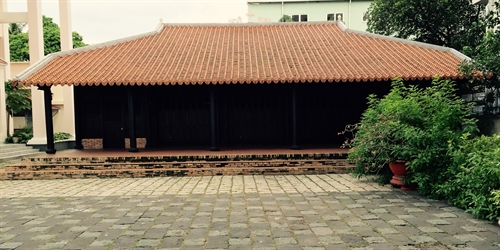 |
| Mobile home: Located on the grounds of the HCM City Catholic Archbishop’s Residence on 180 Nguyễn Đình Chiểu Street, the house was moved twice before it was taken to its current location. VNS Photo Bồ Xuân Hiệp |
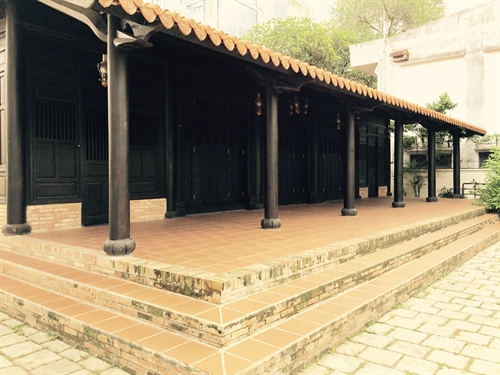 |
| Elevated: During preservation, the floor of the 200-year-old house was raised to prevent flooding. VNS Photo Bồ Xuân Hiệp |
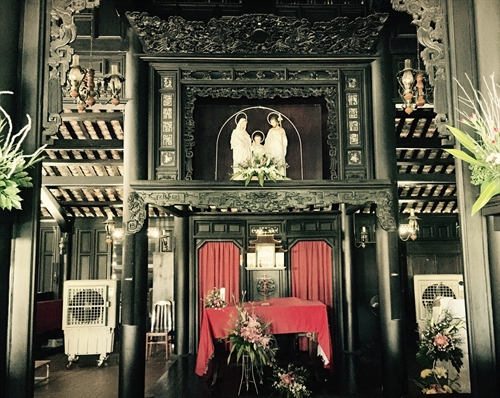 |
| Original altar: Inside the central compartment of the house is a place for an altar, whose details have been preserved for more than 200 years. VNS Photo Bồ Xuân Hiệp |
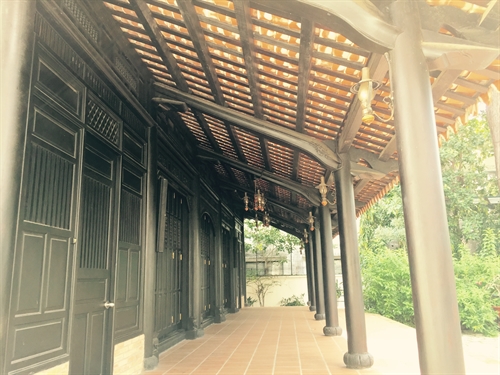 |
| Made in stages: The house, originally built of bamboo, was later improved with wooden walls (made without nails) and a brick roof. VNS Photo Bồ Xuân Hiệp |
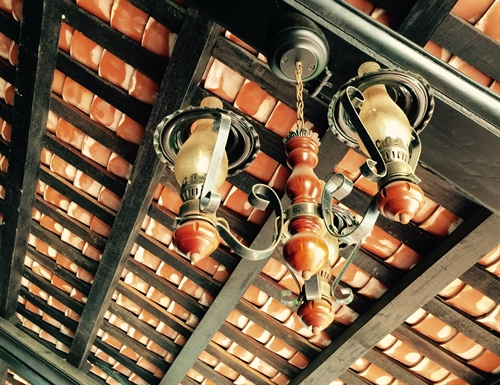 |
| Beautiful lights: The lamps of a 200-year-old house in HCM City have been well maintained over the years. VNS Photo Bồ Xuân Hiệp |




